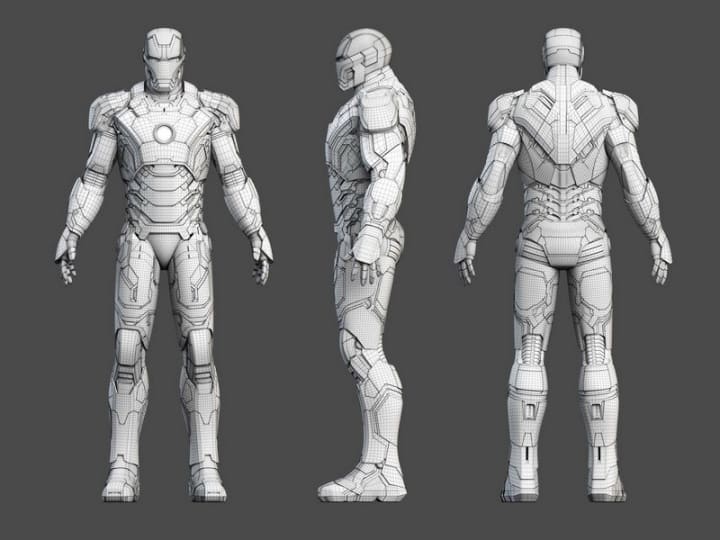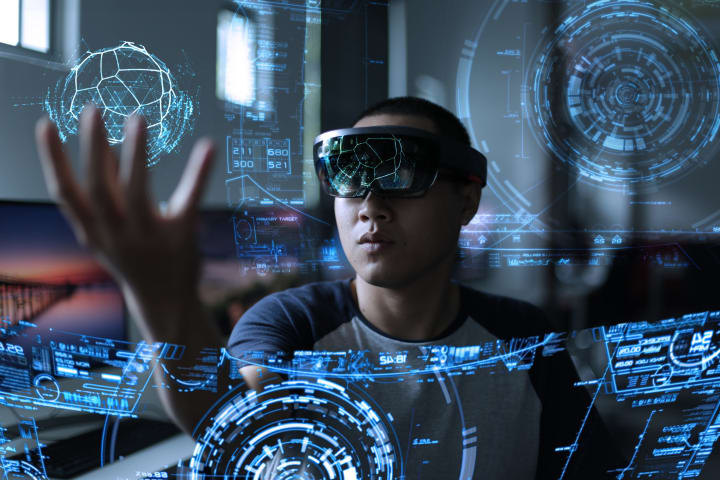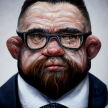FUTURE OF 3D MODELLING
Exploring the Advancements and Opportunities in the World of 3D Modeling

The future of 3D modeling looks bright, as it is an increasingly in-demand skill in a variety of industries. 3D modeling is used in many fields, including architecture, interior design, video game development, film and television, and industrial design. As technology continues to advance, the demand for skilled 3D modelers is likely to grow. In the future, 3D modeling software may become even more user-friendly and capable of producing highly realistic and detailed models. Additionally, virtual and augmented reality may play a larger role in using 3D models, allowing people to interact with and explore digital environments in a more immersive way.

Introduction to 3D modeling and its current uses :
- 3D modeling is the process of creating a digital representation of a three-dimensional object or environment. 3D models are used in a variety of industries, including architecture, interior design, video game development, film and television, and industrial design.
- In architecture and interior design, 3D models are used to visualize and plan out the layout and design of buildings and spaces. In the gaming industry, 3D models are used to create characters, environments, and objects for video games. 3D models are used in film and television to create special effects and backgrounds. In industrial design, 3D models are used to design and test products before they are manufactured.
- 3D modeling software allows users to create, manipulate, and animate 3D models using a computer. There are many different software options available, ranging from simple programs that are suitable for beginners to more complex software that is used by professionals.
Advancements in 3D modeling technology :
There have been many advancements in 3D modeling technology in recent years, and this trend will likely continue in the future. Some of the advancements that have already been made include;
- Improved user-friendliness: Many 3D modeling programs have become more intuitive and easier to use, making it possible for people with little to no modeling experience to create basic 3D models.
- Greater realism: 3D modeling software has become more advanced, allowing for the creation of more realistic and detailed models. This includes the ability to create materials and textures that look and behave like real-world materials, as well as the ability to simulate lighting and shadows.
- Increased speed: 3D modeling software has become faster and more efficient, allowing users to create and render models more quickly.
- Virtual and augmented reality integration: Some 3D modeling software can export models for use in virtual and augmented reality applications, allowing users to experience their models more immersive.
- Cloud-based modeling: Some 3D modeling software is now available as a cloud-based service, allowing users to access their models and work on them from any device with an internet connection.
- Architecture and interior design: 3D models are used to visualize and plan out the layout and design of buildings and spaces.
- Video game development: 3D models are used to create characters, environments, and objects for video games.
- Film and television: 3D models are used to create special effects and backgrounds for movies and television shows.
- Industrial design: 3D models are used to design and test products before they are manufactured.
- Advertising and marketing: 3D models are used to create visuals for advertisements and marketing campaigns.
- Medicine: 3D models are used to create simulations for surgical planning and training.
Increased demand for 3D modeling skills in various industries :
There is a growing demand for skilled 3D modelers in many industries. Some of the industries where 3D modeling skills are in high demand include;
As technology continues to advance and 3D modeling becomes more prevalent in these industries, the demand for skilled 3D modelers is likely to grow.
The role of virtual and augmented reality in the future of 3D modeling :

Virtual reality (VR) and augmented reality (AR) are technologies that allow users to experience digital environments in a more immersive way. Both VR and AR have the potential to play a significant role in the future of 3D modeling.
In the field of architecture and interior design, VR and AR could be used to give clients a more realistic idea of what a finished space will look like. Instead of looking at a 2D floor plan or a 3D model on a computer screen, clients could put on a VR headset and walk through a virtual version of the space. This could help clients better visualize the layout and make more informed decisions about the design.
In the gaming industry, VR and AR could be used to create more immersive gaming experiences. Instead of playing a game on a flat screen, users could put on a VR headset and feel like they are truly inside the game world. AR could be used to overlay digital elements in the real world, allowing users to play games in their environment.
VR and AR could also be used in the film and television industry to create more realistic special effects and backgrounds. Instead of using traditional green screens, actors could perform in front of a VR or AR setup that would place them in the middle of a digital environment.
Overall, the integration of VR and AR with 3D modeling has the potential to create more realistic and immersive experiences in a variety of industries.
Conclusion and outlook for the future of 3D modeling :
In conclusion, the future of 3D modeling looks bright. There have been many advancements in 3D modeling technology in recent years, and it is likely that this trend will continue. 3D modeling is an in-demand skill in a variety of industries, including architecture, interior design, video game development, film and television, and industrial design. As technology continues to advance, it is possible that 3D modeling software will become even more user-friendly and capable of producing highly realistic and detailed models. Additionally, virtual and augmented reality may play a larger role in using 3D models, allowing people to interact with and explore digital environments in a more immersive way. Overall, the future of 3D modeling is full of opportunities for those with the skills and expertise to take advantage of them.
About the Creator
Lokesh Jankiraman
Reader
Enjoyed the story? Support the Creator.
Subscribe for free to receive all their stories in your feed. You could also pledge your support or give them a one-off tip, letting them know you appreciate their work.






Comments
There are no comments for this story
Be the first to respond and start the conversation.